Water supply creates inter-ethnic goodwill
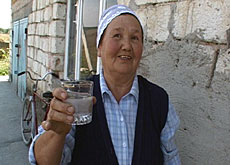
In Crimea, a Swiss-funded project is providing people with water and promoting peaceful co-existence between ethnic groups.
Working together to construct a water-supply system, Russians and Crimean Tartars have got to know one another and put old tensions behind them.
Osman, a young lad of Tartar background, used to go to the well every day to get water – a time-consuming task that prevented him from attending school.
The suspicious looks of villagers of Russian origin, who lived across the street, did not make the job any pleasanter. And when Osman looked up, his gaze would travel away over the arid steppe: his one and only dream was to go and live somewhere else.
That was 15 years ago, when the only water supply was from this polluted – and scanty – underground source.
“Thanks partly to help from Switzerland, our village now has drinking water and conditions have greatly improved,” says Sabri Ramazanov, community representative of Sevastyanovka, a village on Ukraine’s Crimean peninsula.
From the hill overlooking the small settlement of 400 inhabitants, Ramazanov shows us the two 100 square metre drinking-water tanks that have been installed as part of the United Nations-sponsored Crimea Integration and Development Programme (CIDP).
“We have been supporting this programme since 1996, contributing roughly SFr500,000 ($378,000) each year,” explains Ludmyla Nestrylay, national manager of the Swiss Cooperation Office in Ukraine. She adds that, as well as meeting a basic need, the purpose of the CIDP is to improve relations within multi-ethnic communities.
The village of Sevastyanovka is in fact inhabited mainly by Crimean Tartars (a group of Turkish origin, who are Muslims). In the past, their presence aroused mistrust and hostility among the local Russian population.
A painful return
Deported en masse by Stalin after the Second World War, the Crimean Tartars were condemned to exile for almost half a century.
Several hundred thousand people – including many other minority groups – were obliged to start a new life in inhospitable parts of Siberia and in Central Asia, particularly Uzbekistan.
In the late 1980s, when the new wind of glasnost (Gorbachev’s policy of “openness”) began to blow, 260,000 of these deportees were able to return to their native lands. But the return was anything but easy.
“When we arrived back, we had to do everything ourselves; the state gave us nothing. There were no houses, no roads, there was no electricity and, worst of all no water supply,” remembers Ayshe Kudusova, a village councillor.
In addition to the inefficiency and indifference of the authorities, the Tartars had to contend with the mistrust of the Russian-speaking families resident in the area.
It was a delicate situation, explains CIDP national manager Monsur Huetov, and could easily have led to inter-ethnic conflict.
Fortunately, however, the determination of the Crimean Tartars to rebuild and lead a dignified way of life prevailed.
By setting up a community council, the Tartars laid the foundation for peaceful co-existence. One of the projects they planned – a water supply system for the whole village – not only met a basic need, it also provided a basis for understanding between the two groups.
Achieving much with little
Thanks to funding from the CIDP and the Swiss federal government, Russians and Tartars found themselves working side by side to create the area’s first efficient water supply system.
“As we had to manage the infrastructure together, the atmosphere became more relaxed and social relationships gradually improved,” says Huetov, adding that the efficiency of the installation also made it possible to supply the neighbouring village of Samohvalovo.
The community’s direct involvement in the entire process (laying the pipes, working out a pricing structure, maintenance) also gave the inhabitants of Sevastyanovka a greater sense of responsibility.
In addition, the contributions paid by the families using the water supply system (50 cents a month) has provided the village with some disposable income – a fund which, though small, can be used for solving quite serious problems.
As Kamysheva Takize, a village councillor wearing a white headscarf and flashing a brilliant smile, observes: “It may be only a trickle, but many drops make an ocean.”
As you stroll through the village, there are further signs of the miracle wrought by this water: the arid gardens of the past have been transformed into flourishing vegetable plots and colourful orchards.
In the meantime, Osman’s dream has changed. Now living in the Crimean capital, Simferopol, he would like to return with his family to the village, where life seems to hold out more promise. swissinfo, Luigi Jorio in Sevastyanovka, Crimea
The 2 million or so people who live in Crimea belong to 125 different ethnic groups.
The 3 main groups are Russians (58%), Ukrainians (24%) and Tartars (12%).
Since 1989, 260,000 people who were deported in Stalin’s time, most of them Tartars, have returned to live in Crimea.
A similar number are still living in exile, mainly in Central Asia.
When the Crimean Tartars were deported, they were forced to live in urban areas in Central Asia. During their enforced exile, the land they owned in Crimea was illegally expropriated by families of Russian origin. When they returned to their native land, the state placed them in arid areas lacking basic services.

In compliance with the JTI standards
More: SWI swissinfo.ch certified by the Journalism Trust Initiative

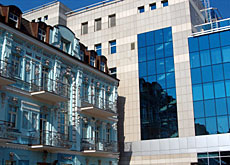
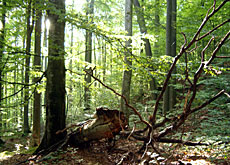
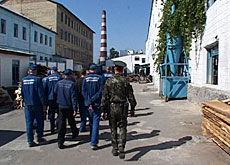
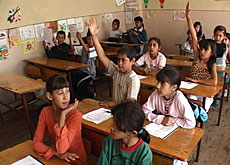
You can find an overview of ongoing debates with our journalists here . Please join us!
If you want to start a conversation about a topic raised in this article or want to report factual errors, email us at english@swissinfo.ch.